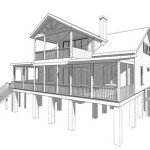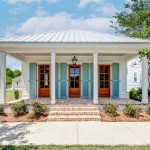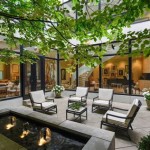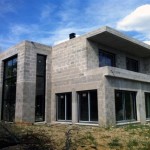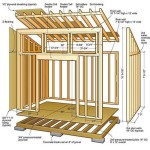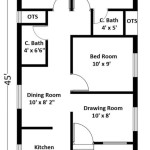Log cabin house plans are comprehensive designs for building a residential structure using logs as the primary building material. These plans outline the layout, dimensions, and specifications for constructing a log cabin, catering to various preferences and requirements.
The allure of log cabins lies in their rustic charm, environmental friendliness, and durability. They offer a unique blend of warmth, character, and connection with nature. From cozy retreats in secluded woods to family-sized abodes in rural settings, log cabins have become increasingly popular in recent years.
The following sections will delve deeper into the intricacies of log cabin house plans, exploring the different types, essential considerations, and benefits associated with this distinctive style of homebuilding.
Here are 9 important points to consider when selecting log cabin house plans:
- Choose the right log type
- Determine the desired size
- Consider the layout
- Plan for energy efficiency
- Consider building codes
- Estimate the cost
- Hire a qualified builder
- Prepare for maintenance
- Enjoy the unique benefits
By carefully considering these points, you can ensure that your log cabin house plan meets your specific needs and preferences, providing you with a home that is both beautiful and functional for years to come.
Choose the Right Log Type
Selecting the right type of logs for your log cabin is crucial as it determines the structural integrity, durability, and aesthetic appeal of your home. Here are the main types of logs used in log cabin construction:
Round Logs: Round logs retain their natural shape, providing a rustic and authentic look. They are typically less expensive than other log types but require more skilled craftsmanship to ensure a tight fit and prevent air leakage. Round logs can be prone to settling and may require additional chinking or caulking over time.
Half-Log: Half-logs are created by cutting logs in half lengthwise. This results in a flatter surface that allows for easier stacking and a more uniform appearance. Half-logs are generally more stable than round logs and less likely to settle. They also provide better insulation, as the flat surfaces fit together more tightly.
Square Logs: Square logs are milled to create a square or rectangular shape. This results in a more modern and refined look, with clean lines and sharp corners. Square logs are typically more expensive than round or half-logs but offer greater stability and insulation. They are also easier to work with and require less chinking or caulking.
D-Logs: D-logs are a hybrid type of log that combines the durability and strength of square logs with the rustic charm of round logs. D-logs have a flat back and a rounded front, providing a unique and visually appealing appearance. They offer good insulation and stability, and are often used in combination with other log types.
The choice of log type ultimately depends on your personal preferences, budget, and the desired style of your log cabin. It’s important to consult with a qualified builder to determine the most suitable log type for your specific project.
Determine the Desired Size
Determining the desired size of your log cabin is a crucial step in the planning process. The size of your cabin will impact its cost, energy efficiency, and overall functionality.
- Consider your needs: How many bedrooms and bathrooms do you require? Will you need a dedicated space for guests or a home office? Determine the minimum size that will comfortably accommodate your current and future needs.
- Think about future expansion: If you anticipate needing more space in the future, consider designing your cabin with an unfinished loft or basement that can be converted into additional living space later on.
- Estimate the cost per square foot: Log cabins typically cost between $100 and $200 per square foot to build. Multiply this cost by the desired square footage to get a rough estimate of the total cost.
- Consider energy efficiency: Larger cabins require more energy to heat and cool. If energy efficiency is a priority, consider designing a smaller cabin with a compact layout.
Ultimately, the size of your log cabin should be determined by your specific needs, budget, and lifestyle. It’s important to carefully consider all of the factors above to ensure that you choose the right size for your dream home.
Consider the layout
The layout of your log cabin is crucial as it will impact the functionality, comfort, and overall livability of your home. Here are some important considerations to keep in mind when planning the layout of your log cabin:
Flow and traffic patterns: Consider how you and your family will move through the cabin. The layout should allow for easy flow between rooms and minimize wasted space. Avoid creating bottlenecks or awkward transitions.
Natural light: Position windows and doors to maximize natural light and create a bright and inviting interior. Consider the orientation of your cabin on the building site to take advantage of sunlight throughout the day.
Privacy and separation: Plan the layout to provide privacy for different areas of the cabin, such as bedrooms and bathrooms. Consider using hallways, pocket doors, or other design elements to separate public and private spaces.
Functionality and efficiency: The layout should support your lifestyle and daily routines. Consider the placement of appliances, furniture, and storage spaces to create a functional and efficient living environment.
By carefully considering these factors, you can create a log cabin layout that meets your specific needs and preferences, ensuring a comfortable and enjoyable living space for you and your family.
Plan for energy efficiency
Energy efficiency is a crucial consideration in log cabin house plans, as it can significantly impact the comfort and cost of living in your home. Here are some important factors to consider when planning for energy efficiency in your log cabin:
Insulation: Proper insulation is essential for reducing heat loss and maintaining a comfortable indoor temperature. Choose insulation materials with high R-values, which measure their resistance to heat flow. Common insulation options for log cabins include fiberglass batts, cellulose, and spray foam.
Air sealing: Air leakage is a major source of energy loss in log cabins. Carefully seal all gaps and cracks around windows, doors, and other openings to prevent warm air from escaping and cold air from entering.
Window selection: Energy-efficient windows can significantly reduce heat loss. Look for windows with double or triple glazing, low-e coatings, and tight seals. Consider installing windows with southern exposure to take advantage of passive solar heat gain.
Heating and cooling systems: Choose energy-efficient heating and cooling systems that are appropriate for the size and climate of your log cabin. Consider options such as geothermal heat pumps, radiant floor heating, or high-efficiency wood stoves.
By incorporating these energy-efficient measures into your log cabin house plans, you can reduce energy consumption, lower utility bills, and create a more comfortable and sustainable living environment.
Consider building codes
Building codes are regulations established by local authorities to ensure the safety and structural integrity of buildings. When designing and constructing a log cabin, it is crucial to adhere to the building codes applicable to your area. These codes may vary depending on the region and municipality, so it’s essential to consult with local building officials to determine the specific requirements for your project.
Building codes typically address various aspects of construction, including:
- Foundation requirements: Building codes specify the minimum depth and width of foundations, as well as the type of footings and reinforcement required to support the weight of the log cabin.
- Log size and spacing: Building codes may regulate the minimum diameter and spacing of logs used in the construction of log cabins. This is done to ensure structural stability and prevent excessive settling.
- Fire safety: Building codes include fire safety measures such as the installation of smoke detectors, fire extinguishers, and fire-rated materials. These measures are designed to minimize the risk of fire and protect occupants in the event of a fire.
- Electrical and plumbing systems: Building codes establish standards for the installation of electrical and plumbing systems in log cabins. These standards aim to ensure the safe and efficient operation of these systems.
By adhering to building codes, you can ensure that your log cabin is constructed to meet minimum safety and quality standards. This can protect you and your family from potential hazards and ensure the longevity of your home.
Estimate the cost
Estimating the cost of building a log cabin is crucial for financial planning and ensuring that your project stays within budget. Here are key factors to consider when estimating the cost of your log cabin house plans:
- Log type and size: The type and size of logs used will significantly impact the cost of your cabin. Round logs are typically less expensive than half-logs or square logs, and smaller logs are generally cheaper than larger logs.
- Building size and complexity: The size and complexity of your log cabin will also affect the cost. Larger cabins with multiple rooms, bathrooms, and intricate designs will cost more to build than smaller, simpler cabins.
- Materials and finishes: The materials and finishes you choose for your cabin, such as roofing, siding, windows, and flooring, will also impact the cost. Higher-quality materials and finishes will typically cost more than lower-quality options.
- Labor costs: The cost of labor will vary depending on the location, availability of skilled labor, and complexity of the project. Building in remote areas or during peak construction season may result in higher labor costs.
It’s important to note that these are just general factors to consider when estimating the cost of a log cabin. The actual cost may vary depending on specific circumstances and local market conditions. It’s highly recommended to consult with a qualified contractor or log cabin builder to get a more accurate estimate for your project.
Hire a qualified builder
Hiring a qualified builder is crucial for ensuring the successful construction of your log cabin. A skilled and experienced builder will have the knowledge and expertise to navigate the unique challenges of log cabin construction, ensuring that your home is built to the highest standards of quality and safety.
When hiring a builder, consider the following factors:
- Experience and references: Look for a builder who has extensive experience in log cabin construction. Ask for references from previous clients to gauge their satisfaction and the quality of the builder’s work.
- Licensing and insurance: Ensure that the builder is licensed and insured. This will protect you from potential legal and financial liabilities in the event of accidents or construction defects.
- Communication and transparency: Choose a builder who is communicative and transparent throughout the construction process. They should be able to clearly explain the plans, timelines, and costs involved in building your log cabin.
- Attention to detail: Log cabin construction requires meticulous attention to detail. Look for a builder who takes pride in their craftsmanship and is committed to delivering a high-quality finished product.
By hiring a qualified builder, you can increase the likelihood of a successful and enjoyable log cabin building experience. Their expertise will ensure that your log cabin is structurally sound, energy-efficient, and built to last for generations.
Prepare for maintenance
Log cabins, like any other type of home, require regular maintenance to ensure their longevity and structural integrity. When planning your log cabin house plans, it’s important to consider the ongoing maintenance needs and prepare accordingly.
- Regular cleaning and sealing: Log cabins should be regularly cleaned to remove dirt, debris, and insects. The logs should also be inspected and resealed periodically to maintain their protective coating and prevent moisture damage.
- Foundation maintenance: The foundation of your log cabin should be inspected regularly for any signs of settling or damage. Address any issues promptly to prevent structural problems.
- Roof maintenance: The roof of your log cabin should be inspected and cleaned regularly to remove debris and check for any damage. Replace any missing or damaged shingles promptly to prevent leaks.
- Pest control: Log cabins can be susceptible to pests such as termites and woodpeckers. Implement regular pest control measures to prevent infestations and protect the structural integrity of your cabin.
By preparing for maintenance and addressing potential issues promptly, you can extend the lifespan of your log cabin and ensure that it remains a beautiful and comfortable home for years to come.
Enjoy the unique benefits
Rustic charm and aesthetics: Log cabins exude a unique rustic charm that is unmatched by other types of homes. The natural beauty of the logs, combined with the traditional craftsmanship, creates a warm and inviting atmosphere. Log cabins are often associated with a sense of nostalgia and connection to nature, making them a popular choice for those seeking a cozy and authentic living experience.
Durability and longevity: Log cabins are renowned for their exceptional durability and longevity. Properly constructed log cabins can withstand harsh weather conditions, insects, and decay, providing a sturdy and long-lasting home. The thick logs provide excellent insulation, helping to regulate indoor temperatures and reduce energy costs.
Energy efficiency: Log cabins are naturally energy-efficient due to the insulating properties of wood. The thick logs help to retain heat in the winter and keep the cabin cool in the summer, reducing the need for excessive heating and cooling. This can result in significant savings on energy bills and contribute to a more sustainable lifestyle.
Health and well-being: Log cabins offer a healthier living environment compared to many other types of homes. Wood is a natural material that regulates humidity and releases beneficial compounds into the air. This can create a healthier indoor environment, reducing the risk of respiratory problems and allergies. Additionally, the natural beauty and tranquility of log cabins can have a positive impact on mental well-being and reduce stress.
Log cabins offer a unique combination of rustic charm, durability, energy efficiency, and health benefits. By incorporating these elements into your log cabin house plans, you can create a home that is not only beautiful but also provides a comfortable, healthy, and sustainable living environment for you and your family.










Related Posts

